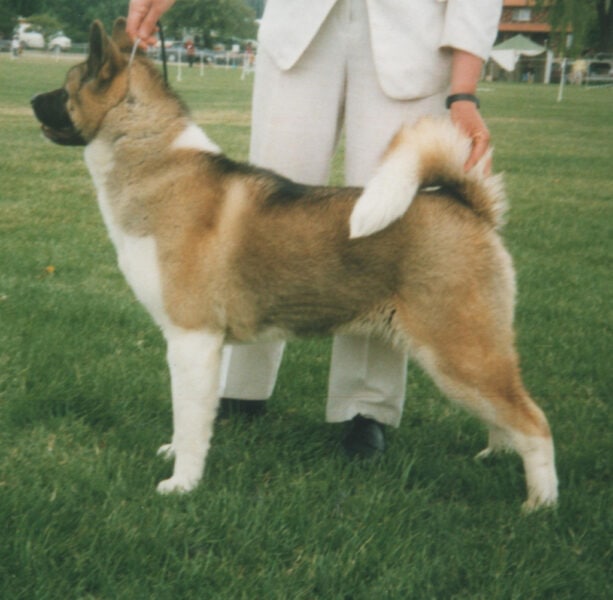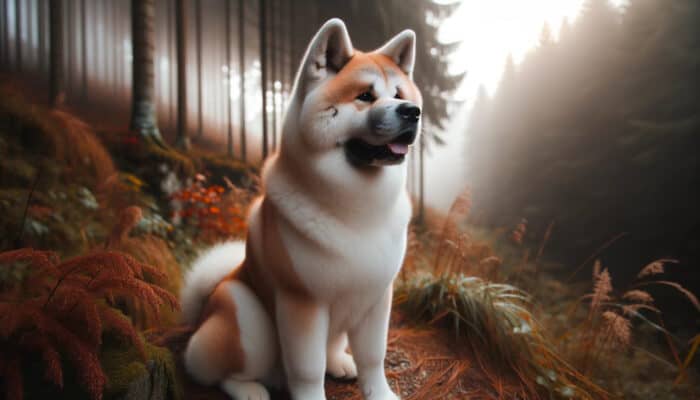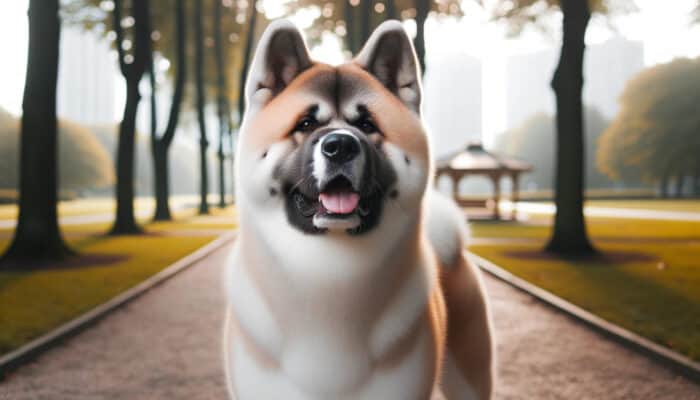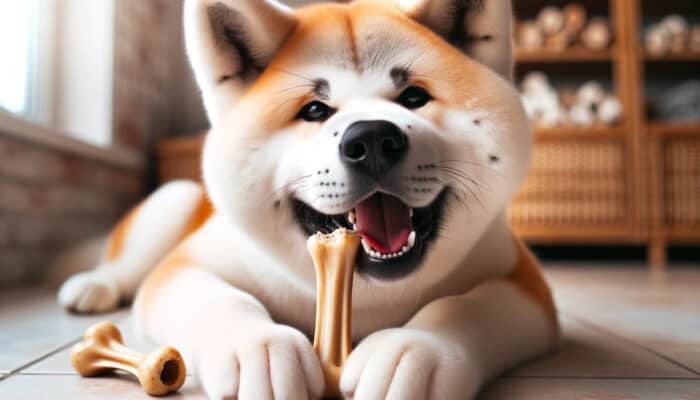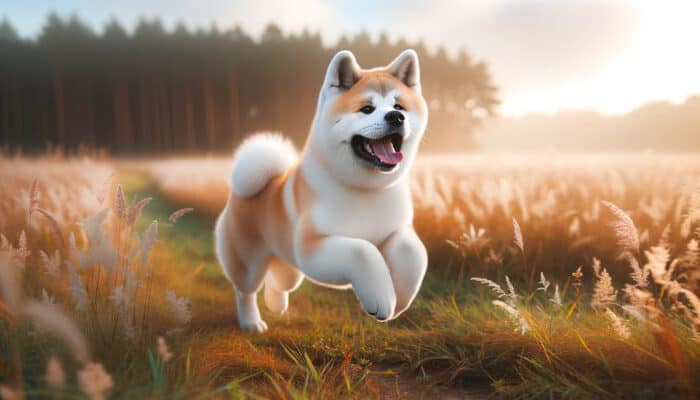The Akita is a remarkable breed, known for its intelligence and loyalty. Originating from Japan, this breed has gained considerable popularity around the world, especially in parts of the USA. Akitas are recognized for their powerful build, often standing out due to their distinct physical features and noble demeanor.
When it comes to dimensions, Akitas have a robust structure, making them ideal companions for those who appreciate strength combined with a gentle nature. While they can be protective, their family-friendly disposition makes them a sought-after pet in many households.
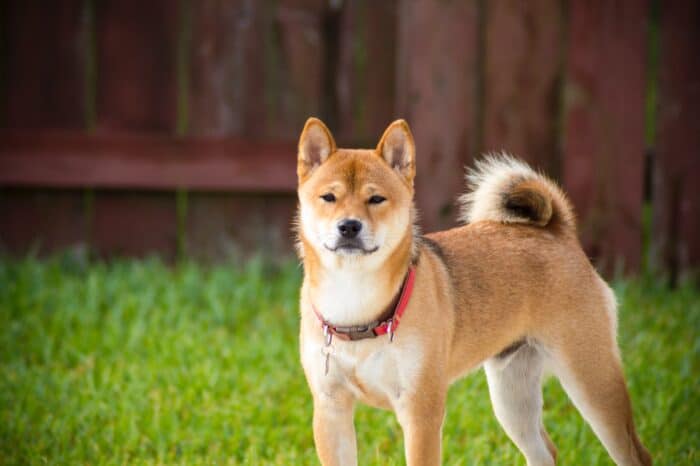
Akitas are Intelligent but Independent: While quick learners, their independent nature calls for consistent and patient training approaches.
Health and Grooming Needs: Akitas have a thick double coat that sheds bi-annually, requiring regular grooming. They are also predisposed to health issues like hip dysplasia.
Strong Protective Instinct: Akitas are known for their loyalty and protective tendencies. They make excellent guard dogs but early socialization is crucial to manage aggressive behaviors.
Exercise and Activity: High energy levels in this breed necessitate regular exercise to keep boredom and destructive behaviors at bay.
Ideal for Experienced Owners: Due to their unique temperament and specific needs, Akitas are best suited for owners with prior experience in dog training and care.
Akita Breed – Quick Facts
| Feature | Description |
|---|---|
| Size | Large; Height: 24-28 inches (61-71 cm) |
| Weight Range | 70-130 pounds (31.8-59 kg); Males typically weigh more than females |
| Predominant Colors | White, brindle, and shades of red |
| Fur Length and Type | Medium; Straight |
| Lifespan | 10-15 years |
| Activity Level | Moderate |
| Intelligence Level | High |
| Ease of Training | Average |
| Good with Kids | With Supervision |
| Training Requirements | Standard |
| Known Health Issues | Hip dysplasia, progressive retinal atrophy, and autoimmune disorders |
Physical Characteristics of an Akita
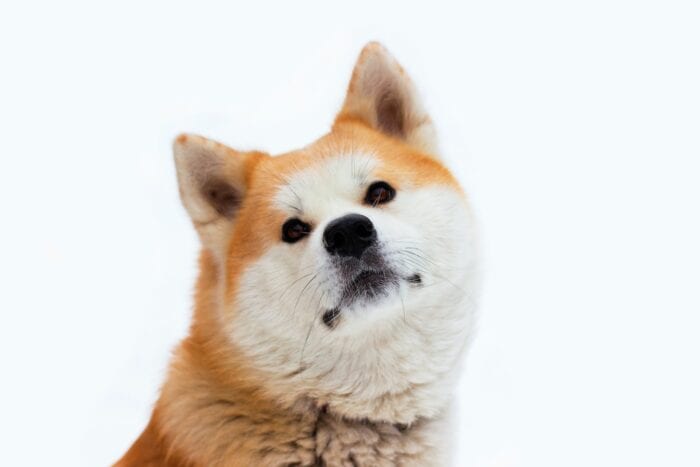
The Akita boasts a strong and muscular build. Typically, males stand taller and have a more pronounced structure than females. These dogs possess a weight that complements their robust build, making them both imposing and elegant.
Their coat, a defining feature, is of medium length and straight. Akitas come in various recognized coat colors, including white, brindle, and different shades of red.
The Akita’s head carries a sense of nobility. Their broad skull, deep-set eyes, and short muzzle give them a distinctive appearance. Ears stand erect, adding to their alert expression.
Apart from their standard color patterns, some Akitas might have unique markings that set them apart. Their posture is upright and dignified, a testament to their confident nature.
When they move, their gait is smooth and powerful, a display of both strength and grace.
Akita Temperament & Personality
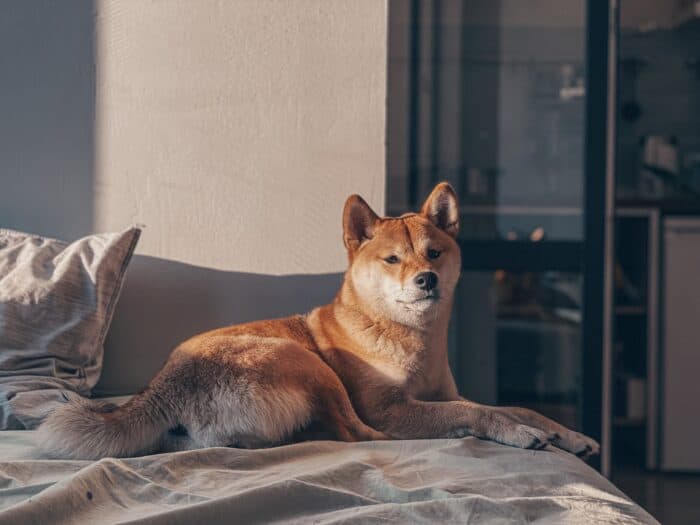
Akitas are known for their calm and dignified demeanor. They carry a certain stoicism that sets them apart from more boisterous breeds. However, their composed exterior often conceals a deep loyalty and affection towards their family.
When it comes to interactions, Akitas are protective of their loved ones. They are generally reserved with strangers but can warm up over time.
With proper introductions, they can get along with other dogs, but their dominant nature might lead to altercations with same-sex dogs. Early socialization is essential to ensure they behave amicably around other animals.
In terms of learning, Akitas are quick to pick up commands, thanks to their high intelligence. However, their independent nature means they can sometimes choose when they want to obey. Training sessions with an Akita require patience, as they respond best to positive reinforcement.
These dogs have moderate energy levels. Regular exercise helps keep them physically and mentally stimulated. Their size and strength might make them seem intimidating, but with the right environment, they fit well into family life.
Akitas are especially gentle with children they’ve grown up with but should always be supervised during interactions.
Similarly, while they can coexist with other pets, early socialization and proper introductions are key.
What Does The Ideal Home For an Akita Look Like?
An Akita’s ideal home caters to its physical and emotional needs. Given their size and active nature, a house with a spacious backyard is preferable. This allows them the freedom to move, play, and exercise without constraints.
Ensuring the yard has secure fencing is crucial, as Akitas are known to be protective and might chase after perceived threats.
Families with varied dynamics can welcome an Akita, but considerations are necessary. For households with children, teaching both the dog and the child mutual respect is essential.
Elderly members can coexist harmoniously with an Akita, provided there’s an understanding of the dog’s strength and energy.
If other pets are present, especially dogs, monitoring their interactions is vital, especially in the early stages.
Exercise is non-negotiable for an Akita. Beyond a backyard, access to walking paths or parks where they can have longer walks or runs is beneficial. These outings not only cater to their physical needs but also provide mental stimulation.
Can Akitas be left alone?
Akitas possess a calm and independent nature, which means they can handle solitude better than some breeds. However, prolonged periods of isolation aren’t ideal. Like all dogs, they crave human interaction and can develop feelings of loneliness or anxiety if left alone for extended durations.
Potential behaviors stemming from separation anxiety include destructive habits like chewing or digging. To mitigate such behaviors, it’s crucial to ensure they have enough mental and physical stimulation during the day. Interactive toys or puzzle feeders can keep them occupied in your absence.
However, it’s worth noting that while they can manage short periods of solitude, Akitas thrive best when they’re around their human family. Consistent companionship and daily interactions strengthen the bond and keep the dog mentally content. If regular long absences are anticipated, considering a pet sitter or doggy daycare might be beneficial for the Akita.
Ideal Owner for an Akita
The Akita is a breed that thrives with an owner who understands its unique temperament and needs. Ideally, someone with prior dog-handling experience would be a good match. Their independent and sometimes dominant nature means they need a handler who can establish themselves as a leader without resorting to harsh methods.
In terms of lifestyle, the Akita fits well with individuals who lead an active life but also appreciate quiet moments. This breed requires regular exercise but also enjoys calm evenings by their owner’s side. A balance between activity and relaxation suits them best.
Training is a vital aspect of an Akita’s life. They are intelligent and can learn quickly, but their independent streak means they need consistent training. An owner should be prepared to invest time and patience in training sessions, focusing on positive reinforcement techniques.
Are Akitas good with kids?
Akitas have a reputation for being protective and loyal to their families, which often includes the children in the household. When raised alongside children, Akitas usually develop a strong bond and can be gentle and patient with them.
Their sturdy build means they can tolerate the occasional rough play or unintentional rough handling that sometimes comes with kids.
However, it’s essential to note that interactions between Akitas and children should always be supervised. Young children might not always understand how to approach or play with a dog, and any dog, including Akitas, can become agitated if they feel threatened or hurt.
Teaching children how to interact with dogs safely, combined with the Akita’s natural protective instincts, can create a harmonious environment.
In families with older children or teenagers, Akitas often thrive, enjoying play sessions and participating in family activities.
Are Akitas aggressive?
Akitas, by nature, are protective and can be wary of strangers. This protective instinct can sometimes be mistaken for aggression. However, when properly socialized and trained, Akitas are not inherently aggressive without reason. They are loyal to their families and can be reserved with unfamiliar people or animals.
It’s essential to understand their behavioral cues. A properly socialized Akita will usually give warning signs, such as growling or showing discomfort, before resorting to any aggressive behavior. Early exposure to various environments, people, and animals can help reduce unwarranted aggressive tendencies.
There are situations where an Akita might display aggression, such as when they perceive a threat to their family or territory. This is where their protective nature comes into play.
How Popular Is This Breed?
The Akita, originating from Japan, has gained significant popularity across the globe, especially in the USA. In its homeland, the Akita is celebrated not just as a loyal companion but also as a symbol of good health, happiness, and long life. Their history as revered protectors and hunters has earned them a special place in Japanese culture.
In the USA, the Akita’s popularity has seen steady growth, thanks in part to their striking appearance and noble temperament. Many American families have embraced the breed for its protective instincts and loyalty. Their presence in movies, television, and celebrity households has further propelled their status.
While the Akita’s popularity in the USA is undeniable, their global appeal is also noteworthy. In various regions, from Europe to Asia, the Akita has found a place in the hearts of dog enthusiasts. Their unique blend of strength, loyalty, and beauty has contributed to their worldwide acclaim.
Akita Grooming
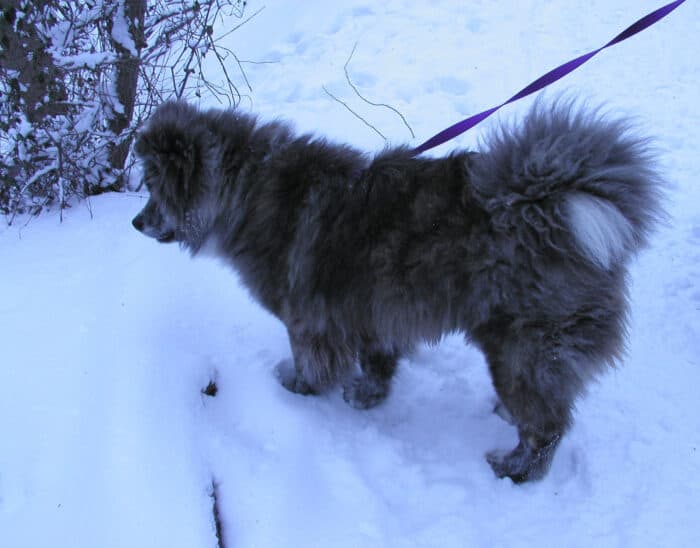
Grooming plays a significant role in an Akita’s care due to their dense double coat. Regular grooming not only keeps the Akita looking its best but also promotes skin health and reduces the amount of loose hair around the home.
Their coat is medium in length and requires weekly brushing to keep it free from tangles and mats. A slicker brush or metal comb works effectively in reaching the undercoat and removing loose fur. During shedding seasons, which usually occur twice a year, daily brushing becomes crucial to manage the increased hair fall.
Using a suitable dog shampoo, Akitas should be bathed every two to three months, or whenever they get particularly dirty. It’s essential to dry them thoroughly after baths to prevent any moisture-related skin issues. Given the thickness of their coat, a blow dryer on a cool setting can be beneficial.
While the focus often lies on their fur, other grooming needs shouldn’t be overlooked. Regular nail trimming ensures their paws remain healthy. Checking their ears for signs of infection or debris and brushing their teeth contributes to their overall well-being.
Do Akitas shed?
Yes, Akitas do shed. They possess a dense double coat that goes through a shedding process, often referred to as “blowing their coat,” typically twice a year. During these periods, they shed their undercoat in large quantities, leading to clumps of hair around the home.
Outside of these shedding seasons, Akitas will still lose some hair, but it’s much less significant than during their biannual sheds. To manage the shedding, regular brushing, especially during peak shedding times, is crucial. Brushing not only helps reduce the amount of loose hair but also distributes the natural oils of the skin, promoting a healthy and shiny coat.
Akita Diet: What Do They Eat?
The Akita, being a large and active breed, requires a well-balanced diet to support its energy levels and overall health. Their dietary needs encompass a mix of proteins, fats, vitamins, and minerals.
The foundation of an Akita’s diet should be high-quality protein sources, such as chicken, beef, or fish. These proteins support muscle development and maintenance. Fats, particularly omega fatty acids, contribute to a shiny coat and healthy skin.
While many owners opt for commercial dog foods, it’s essential to choose premium brands that list real meat as the primary ingredient and don’t contain fillers or artificial additives. Some Akitas might also thrive on raw or home-cooked diets, but it’s crucial to consult with a veterinarian to ensure all nutritional needs are met.
Akitas, like many breeds, can have sensitivities or allergies to certain foods. Common culprits include grains, dairy, and certain proteins. Observing any changes in their behavior, skin, or digestive health after introducing new foods can help identify any potential issues.
Portion control is essential. Overfeeding can lead to obesity, a common issue in Akitas. Ensuring they receive the right amount of food, combined with regular exercise, will keep them at a healthy weight. Treats, while a good training aid, should be given in moderation and should be healthy options that complement their regular diet.
How to Feed an Akita
Feeding an Akita requires some considerations to ensure they receive adequate nutrition without overfeeding. A structured feeding routine works best for this breed. Setting specific meal times, rather than free feeding, helps regulate their intake and prevents overeating.
Using a large, sturdy bowl is recommended. Stainless steel bowls are durable and easy to clean. They’re also less likely to harbor bacteria compared to plastic bowls. Elevating the bowl can make it more comfortable for some Akitas to eat, especially as they age.
Akitas should be fed based on their age, weight, activity level, and health needs. Puppies, being in a growth phase, require more frequent meals, typically three to four times a day. As they mature, this can be reduced to two meals a day.
How Much to Feed an Akita
Determining the right amount of food for an Akita hinges on various factors including their age, weight, activity level, and overall health. However, there are general guidelines that can assist Akita owners in making informed decisions.
For puppies aged 2-6 months, they typically require more calories due to their rapid growth. This might range from 2 to 4 cups of high-quality puppy food, divided into three meals daily.
As Akitas transition to adulthood, around 7-12 months, their calorie intake might slightly decrease. An average adult Akita often consumes between 3 to 5 cups of dog food daily, split into two meals. Active Akitas might require more food, while less active or older ones might need less to prevent weight gain.
It’s essential to use the feeding guidelines on dog food packages as a starting point, adjusting based on the Akita’s condition and energy. Regular weight checks and body condition assessments are invaluable. An Akita in ideal condition has a noticeable waist when viewed from above and ribs that are palpable without excess fat covering.
Health Considerations
Akitas, like all breeds, have specific health concerns that potential and current owners should be aware of. Being informed about these issues helps in early detection and effective management.
A common concern in Akitas is hip dysplasia, a genetic condition where the hip joint doesn’t develop correctly. This can lead to arthritis and pain in the later stages of the dog’s life. Regular vet check-ups and maintaining a healthy weight can help manage this condition.
Another prevalent issue is progressive retinal atrophy, an eye disorder that eventually leads to blindness. Regular eye check-ups can detect this condition early on.
Hypothyroidism, a condition where the thyroid gland doesn’t produce enough hormones, is also seen in some Akitas. Symptoms include weight gain, lethargy, and skin issues. This condition is manageable with medication.
Autoimmune disorders are also a concern in this breed. These disorders occur when the dog’s immune system attacks its body tissues. Symptoms vary depending on the affected organ.
Lastly, Akitas can also be prone to certain skin issues like allergies or sensitivities. Regular grooming and check-ups can help detect and treat skin problems early on.
How much exercise do Akitas need?
Akitas are active and strong dogs, necessitating regular exercise to maintain their physical and mental well-being. Despite their calm demeanor indoors, they have a lot of energy to expend.
On average, an adult Akita requires at least an hour of exercise daily. This can be split into two daily walks combined with play sessions. They enjoy activities like fetch, tug-of-war, and even agility training. Due to their intelligence and curiosity, they also benefit from mental stimulation such as puzzle toys or obedience training.
While Akitas are adaptable to living in apartments, they thrive better in homes with a yard where they can roam and play. If in an apartment, ensuring they get sufficient outdoor time is crucial.
Akita Training
Training an Akita requires patience, consistency, and understanding of the breed’s temperament. Being an intelligent and independent breed, Akitas can sometimes be a challenge to train, but with the right approach, they can be taught to be well-mannered and obedient companions.
Starting training early is crucial. As puppies, Akitas are more receptive to learning and socialization. Basic obedience commands like sit, stay, and come should be introduced during this period. Positive reinforcement, using treats or praise, is effective in encouraging desired behaviors.
Socialization is another vital component of training. Exposing Akitas to various environments, people, animals, and situations helps in shaping their behavior and reducing aggression or fear. Regular visits to parks, busy streets, or inviting guests over can provide varied experiences for the dog.
While Akitas have a natural protective instinct, it’s essential to ensure this doesn’t turn into unwarranted aggression. Clear boundaries and consistent behavior from the owner help in establishing a hierarchy, ensuring the Akita knows its place in the family.
Advanced training, like agility or obedience competitions, can also be explored. Akitas, with their intelligence and agility, can excel in these activities, provided they’re trained with patience and consistency.
Potty training and house manners are other essential areas to focus on. Given their size, an Akita jumping on guests or furniture can be problematic. Teaching them where to relieve themselves and establishing house rules early on prevents future issues.
Are Akitas easy to train?
Training an Akita presents both challenges and rewards. As a breed, Akitas are intelligent, which means they grasp commands quickly. However, their independent nature can sometimes make them seem stubborn or aloof.
For first-time dog owners, training an Akita might be more challenging compared to other breeds. They often test boundaries and require a firm, consistent hand to guide them. However, it’s vital to approach training with patience and avoid harsh methods. Using positive reinforcement techniques, such as treats and praise, is far more effective than punishment.
Are Akitas smart dogs?
Yes, Akitas are smart dogs. Their intelligence is evident in various aspects of their behavior and interactions. Akitas are quick learners, often grasping new commands or tricks after a few repetitions. Their ability to problem-solve and adapt to different situations showcases their cognitive capabilities.
What are the drawbacks of Akitas?
Every dog breed has its unique set of challenges and Akitas are no exception. Understanding these drawbacks is essential for potential Akita owners to ensure they’re prepared for the commitment.
Akitas have a strong guarding instinct. While this makes them excellent protectors, it can also lead to aggressive behaviors if not managed correctly. Proper training and socialization from a young age are crucial to prevent unwarranted aggression towards strangers or other animals.
Healthwise, Akitas are predisposed to certain genetic issues like hip dysplasia and progressive retinal atrophy. Regular vet check-ups and buying from reputable breeders who screen for common health problems can help in managing these risks.
Grooming an Akita can be a considerable task, especially during their shedding seasons. Their thick double coat requires regular brushing to prevent matting and to reduce the amount of hair around the home.
Their high energy levels mean Akitas require regular exercise. Without proper outlets for their energy, they can become destructive or develop behavioral issues.
Lastly, Akitas are known for their independence. While this trait can be admirable, it also means they can be stubborn during training. Consistency and patience are needed to train an Akita effectively.
Popular Akita Mixed Breeds
Mixed breeds are gaining popularity as they often combine the best traits of both parent breeds. Akitas, with their distinct looks and characteristics, are often chosen for crossbreeding to achieve specific temperamental or physical traits.
One popular Akita mix is the Akita Shepherd, a blend between an Akita and a German Shepherd. This mix tends to be loyal, protective, and intelligent. Their appearance can vary, but they often have the stature of a German Shepherd with the facial features of an Akita.
The Labrakita, a mix between an Akita and a Labrador Retriever, is another sought-after mix. They tend to be friendly, energetic, and great with families. Their coat can vary in length but is usually dense and straight.
Another notable mix is the Huskita, a blend of an Akita and a Siberian Husky. They are known for their striking appearance and high energy levels. They often inherit the Husky’s blue eyes and the Akita’s robust build.
The Akipoo, a mix between an Akita and a Poodle, often results in a dog that’s intelligent and slightly easier to groom, especially if they inherit the Poodle’s curly coat. They can be playful and are often good with kids.

